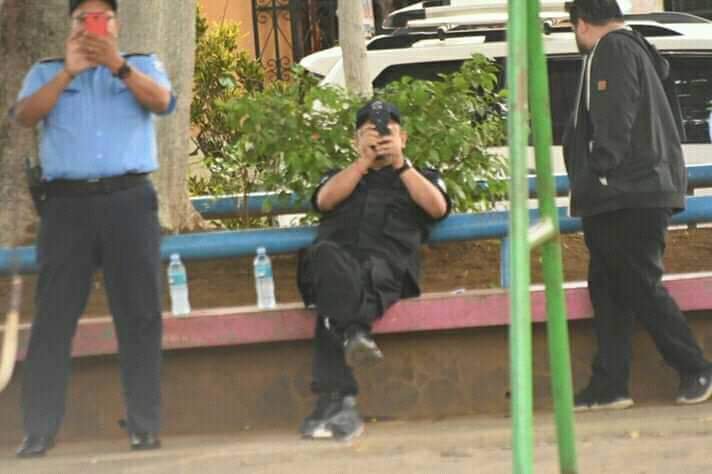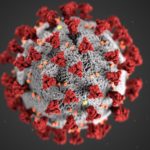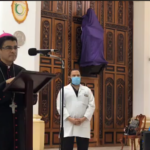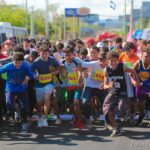Even though the Ortega-Murillo government has fully released 106 political prisoners under an Amnesty Law, several amnesty recipients have denounced police harassment, and there are at least two people who have been unable to return home at all.
Olesia Muñoz, from Niquinohomo, and Irlanda Jerez, of Managua, reported that Orteguista sympathizers made it impossible for them to go home. Muñoz’ house is reportedly surrounded by Ortega-Murillo sympathizers. In the case of Jerez, the Orteguistas forcefully occupied the property on Tuesday.
Muñoz recorded this video, stating that she was told to seek refuge elsewhere. “I cannot go to Niquinohomo today because I fear for my life,” she said. She also asked people to be careful. “It is not safe out there. There are still crazy people out there who are trigger happy.”
🆘️Denunciamos🆘️
Olesia Muñoz, excarcelada política, expone que no pudo ir a su casa porque se encuentra asediada así que decidió refugiarse al igual que Irlanda Jerez, a quien temprano le invadieron su propiedad paramilitares sandinistas.#SOSNicaragua #SancionesYa pic.twitter.com/WYLt130Gjh
— Team ADNIC (@TeamADNIC_) June 12, 2019
This morning, journalist Emiliano Chamorro, of La Prensa, went to Jerez’ home in the neighborhood of Villa Fontana, in Managua. He was told by a guard that “she does not live here,” and to “go look for her at her house.
"Vaya a buscarla a su casa. Ella ya no vive aqui". Asi respondio un vigilante que se cubria rostro con lentes y gorra en casa de Irlanda Jerez. La opositora excarcelada ha denunciado confiscacion y saqueo de su casa, en Villa Fontana, en Managua. @laprensa pic.twitter.com/9Qbr4yY8XG
— Emiliano Chamorro Mendieta (@EmilianoCHM69) June 13, 2019
In León, student leader Byron Estrada went up to the police officers stationed outside his home and filmed them. Estrada asked them to stop the harassment.
“There is no reason for you to be out here, harassing me. What are you looking for? Just tell me what you want. Enough is enough! you’ve made Nicaraguans suffer. […] We’re not scared of you. The fear is over.”
#LoÚltimo El excarcelado Byron Estrada de León, enfrenta a la policía que lo han estado asediando, a él y a su familia. #SOSNicaragua pic.twitter.com/UNdGhh046y
— Nicaragua Actual (@NicaraguaActual) June 13, 2019
In Bluefields, Jeffry Jarquín also confronted special operations officers and a police commissioner surrounding his home. Jarquín asked why, if he had received amnesty, he was not allowed to exercise his constitutional right to protest. Jarquín accused the police for the murder on Angel Gahona, the killing of Eddy Montes, and his own torture while in police custody.
“The silenced Angel Gahona, but there is a black Angel Gahona, there is a woman Angel Gahona, there is my mother, who suffered with me. She know what I went through. She knows what they did to me; they tortured me by order of of Commissioner Mayra Quiroz and Commissioner Luis Valle.”
Este vídeo debe circular por TODAS partes. Este excarcelado encara al policía que dio la orden de torturarlo.
Esto pasa cuando un régimen de criminales sin valores, intenta apresar a ciudadanos formados, dignos, valientes, educados e íntegros.
Me emociono al ver tanta dignidad. pic.twitter.com/f2LWlxcysK
— Ricardo Zambrana (@Zambranitis) June 12, 2019
Police presence was also noticeable in Masaya on Wednesday afternoon, when the Ortega-Murillo police, led by Commissioner Ramón Avellán, posted several units around the Church of San Miguel Arcángel. The deployment took place as the people of Masaya attended a thanksgiving mass for the release of the political prisoners.
Pictures of Avellán, sitting at a park bench outside of the church, circulated widely over social media. One image shows the commissioner and another officer photographing the church.
El bailador empedernido y “héroe de la paz” comisionado “Jayan” asediando la iglesia San Miguel en Masaya, mientras ex rehenes políticos asisten a una misa oficiada por el padre Edwin Román. pic.twitter.com/0DUtPJyCP6
— Café con Voz (@CafeconVozNi) June 12, 2019
In spite of police intimidation tactics, the people of Masaya not only attended the service, but also staged a picket outside of the church, right in front of Commissioner Avellán, who stood there while people chanted “si se pudo”, yes we can.
Así vigilaba hoy el comisionado Ramón Avellán, la misa de acción de gracias que ofreció a los presos políticos liberados, el padre Edwin Román, en la iglesia San Miguel de Masaya. pic.twitter.com/NXgHErbHTP
— BOLETIN ECOLOGICO (@BOLETINECOLOGI) June 13, 2019
This is another angle of the picket.
Masaya, fuera de la iglesia San Miguel Arcángel, excacerlados y pobladores protestan. #SOSNicaragua pic.twitter.com/ncmHDJI8Il
— Gerall Chávez (@GerallChavez) June 12, 2019
Inside the church, the people of Masaya were also defiant.
Así se encuentra la iglesia San Miguel en #Masaya. Varios excarcelados han asistido a la misa encabezada por el padre Edwin Román https://t.co/e0NRpjBi45 🔴🔴🔴 #CiudadaníaInformada pic.twitter.com/6dutFGUxeK
— nicaraguainvestiga (@nicaraguainvest) June 12, 2019
Article 3 of the Amnesty Law states that amnesty beneficiaries “must abstain” from “repeating the conduct that generated the crimes” for which they were granted the amnesty. Increased police surveillance of amnesty recipients is likely to be explained as permitted by Article 3.
The Ortega-Murillo police has yet to issue any clarification on this matter. However, their PR division released a music video paying homage to the officers of the special operations division. The song is titled “pure heart.”




